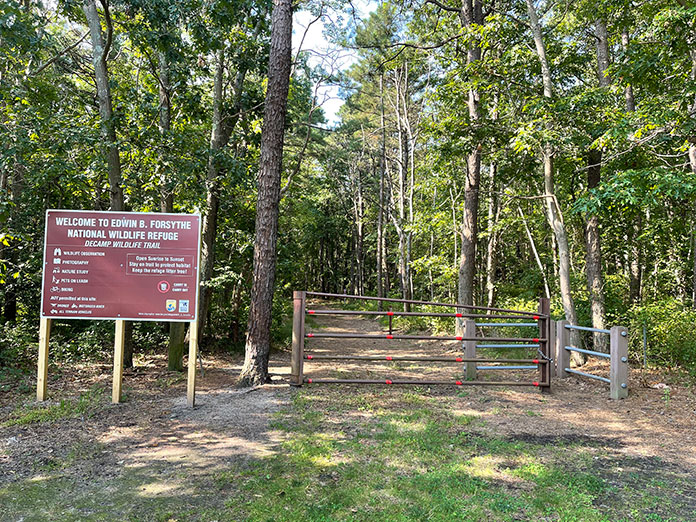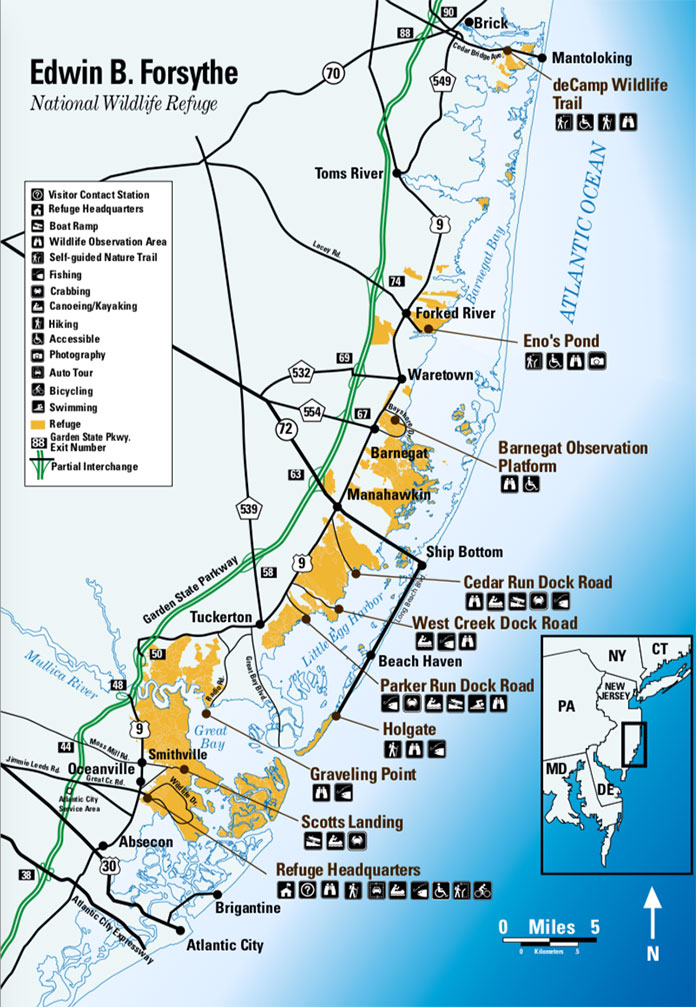
BRICK – A 3.4-mile (round-trip) walking trail that passes through the woods and ends at a saltmarsh is accessible to the public at the intersection of Mantoloking Road and Adamston Road, marked by a large parking lot.
The first 1,700 feet of the deCamp Wildlife Trail has interpretive signs, benches and a flat walking surface, and is part of the 47,000-acre Edwin B. Forsythe National Wildlife Refuge.
The Brigantine National Wildlife refuge, established in 1939, and the Barnegat National Wildlife Refuge, established in 1967, were combined in 1984 through a Congressional Joint Resolution and renamed in memory of the late Congressman from New Jersey, conservationist Edwin Bell Forsythe (1916-1984).
According to the U.S. Fish and Wildlife Service, who administers the refuge, both the Brigantine and the Barnegat refuges were established under provisions of the Migratory Bird Conservation Act since they are located in one of the Atlantic Flyway’s most active flight paths for migrating waterfowl and shorebirds east of the Mississippi River.
The U.S. Fish and Wildlife Service says the value of the refuge for the protection of water birds and their habitat continues to increase as development at the Jersey Shore becomes more and more dense.
More than 82 percent of the refuge is wetlands, of which 78 percent is salt marsh, interspersed with coves and bays.

Some 5,000 acres are woodlands, which provide habitat for grassland nesting birds, including songbirds, woodcock, white-tailed deer and box turtles.
The Forsythe refuge is one of over 555 refuges in the National Wildlife Refuge System administered by the U.S. Fish and Wildlife Service.
Every spring and fall, tens of thousands of migrating ducks and geese, wading birds and shorebirds congregate at the refuge.
Several migratory species, including the clapper rail, willet and black duck, remain at the refuge through the summer to nest and raise their young. Atlantic brant and black ducks also overwinter at the refuge.
Following Superstorm Sandy, the Brick portion of the refuge was densely covered with an estimated 250 tons of debris resulting from the storm surge and its proximity to an inlet that formed across the bay in Mantoloking.
At the time, the trail and its surroundings were nearly impassable, and were covered in wood planks from destroyed homes, decking, furniture, appliances, sections of roofs, and other debris, including entire boats.

According to the U.S. Fish and Wildlife, a total of $65 million in federal funding was used to remove debris, and to restore and rebuild national wildlife refuges, fish hatcheries and more after Superstorm Sandy. A portion of this was used to clean up the deCamp Wildlife Trail.
In April 2020, the National Wildlife Refuge was temporarily closed as a result of the COVID-19 public health crisis, but reopened in June 2020.
The deCamp Wildlife Trail is good for all skill levels of hikers, despite the varying terrains of gravel, woods and wetlands. Dogs are welcome but must be leashed.
The Edwin B. Forsythe National Wildlife Refuge operates a Visitor Information Center at its headquarters 800 Great Creek Road, Galloway.
The refuge is open from sunrise to sunset.
For more information, visit fws.gov







